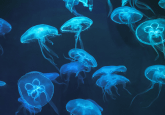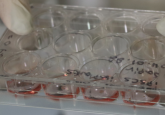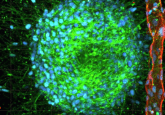The molecular glue that led to multicellularity
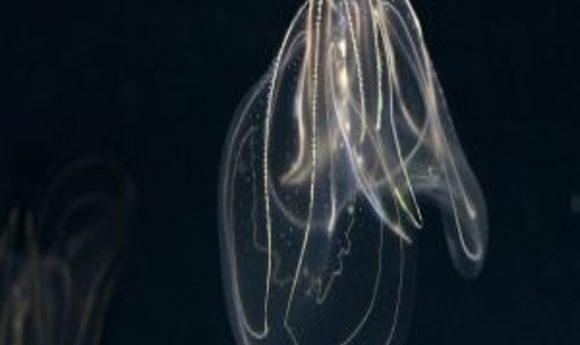
Researchers have identified a key innovation during evolution that led to multicellularity.
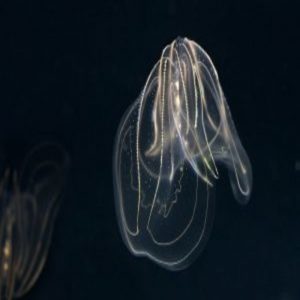
Mnemiopsis ledyi
Credit: Petra Urbanek, Wikimedia
For over 3 billion years, single-celled organisms were the only living creatures in the primordial soup of the earth’s oceans. Then around 600 million years ago, the first multicellular animals, metazoans, appeared after descending from an ancestor now long-extinct. A recent study in eLife traces the evolutionary history of one of the molecular factors that made this epochal transition between unicellular and multicellular animals possible.
Aaron Fidler and his colleagues at Vanderbilt University report that the protein collagen IV—a “molecular glue” that binds cells together—was one of the earliest components of the extracellular matrix. “[The paper] really best establishes this idea that basement membranes emerged right at the time of multicellularity and that collagen was crucial in the formation of basement membranes,” said David Sherwood from Duke University, an expert on basement membranes who was not involved with the study.
Collagen IV is one of the most abundant proteins in the body; it forms basement membranes, which are important structural components of all tissue and organ linings. Fidler and colleagues combined bioinformatic, histological, and biochemical tools to examine the structure of the basement membrane and collagen IV in some of the most ancient animal lineages, including poriferans (sponges), ctenophores (comb jellies), and cnidarians (sea anemones, jellyfish, and hydra).
Except for a few classes of sponges, the researchers found collagen IV in every animal lineage they studied, even in those where most other extracellular matrix components were conspicuously absent. However, collagen IV was missing in free-living unicellular organisms, including choanoflagellates, which are considered the closest evolutionary relatives of metazoans.
The most surprising results, however, came from comb jellies. These odd sea creatures, believed by some to be the most ancient phylum of animals still living, contained an astonishing variety of collagen IV genes. Invertebrates carry 2 genes for collagen IV, and vertebrates have 6, but ctenophores had anywhere between 4 and 20 collagen IV genes, with a total of 118 unique gene sequences observed in the 10 species studied.
“That was a very big surprise. Actually when we got the data, we didn’t trust it,” said Fidler. The 2013 publication of the genome sequence of Mnemiopsis leidyi, a prominent ctenophore, lent credence to the results, so the team decided to follow up on their data.
Comb jelly collagen IV appeared in gene orientations and exon configurations not observed in any other species. Other unique features included two extra protein domains not seen in other metazoans, one of which helps collagen molecules bind to each other, lending structural strength to the extracellular matrix.
According to Carl Darris, co-first author of the paper, this study demonstrates the importance of collagen IV in evolution and the transition from unicellularity to multicellularity. “I think it gives a strong argument to really focus on collagens in not only an evolutionary aspect, but in how tissues are formed,” Fidler added.
